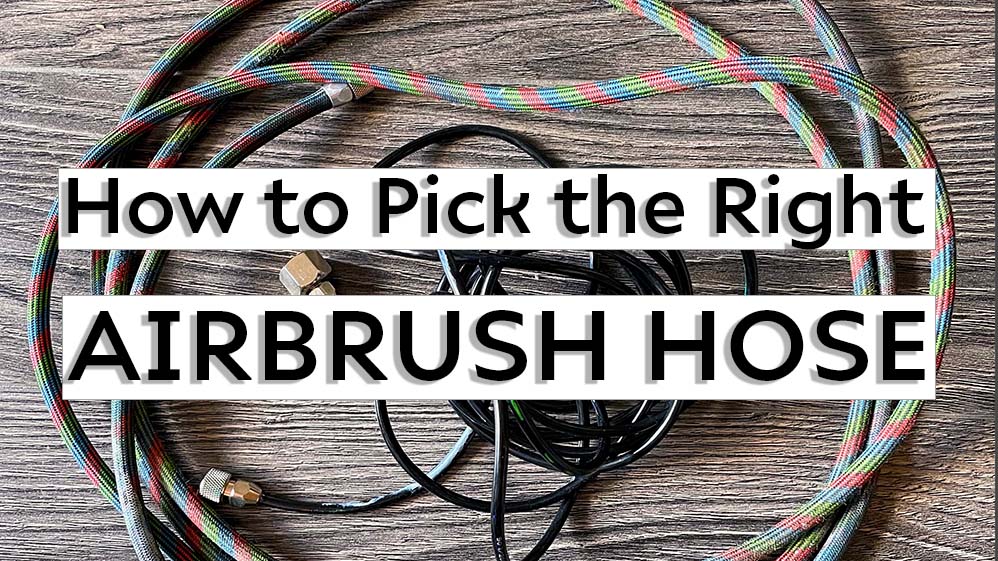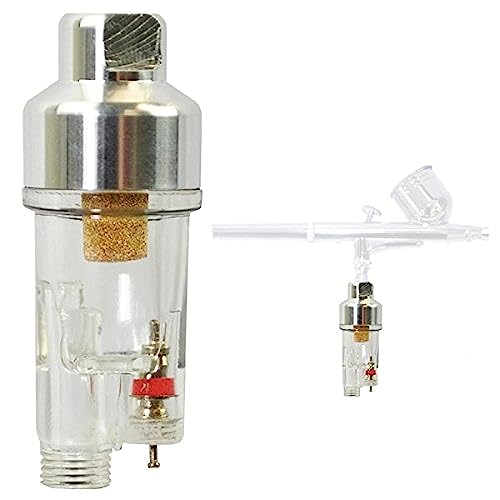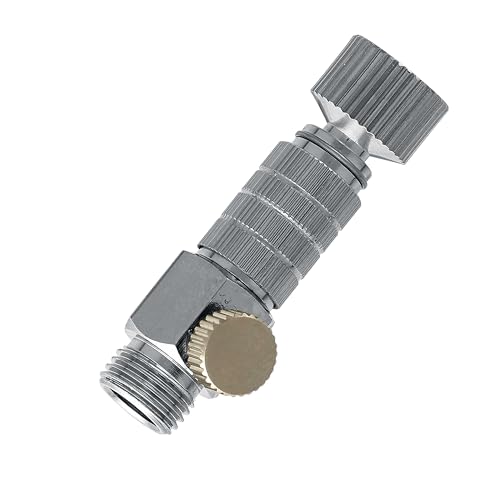Airbrush hoses are an integral part of the airbrushing setup. If you don’t have a good airbrush hose, you don’t have a good connection between the airbrush and the air compressor.
As every airbrush artist can attest, poor airflow means bad times because your airbrush won’t get what it needs to work properly.
Since you’re probably into having a good time airbrushing, I thought I would write this article about how to pick the right airbrush hose. Fortunately, I already made the mistake of picking any old airbrush hose for my setup because I thought they were all the same – turns out that is not the case.
Not all airbrush hoses are the same. Airbrush hoses vary in length, construction material, thread sizes, and connection type. Adaptors can ensure that the airbrush hose connects on either end to both the airbrush and compressor.
This article is about how to not make the same mistake as me. Read on for more on how to pick a quality airbrush hose that connects properly, has the length you need, and delivers strong airflow to your airbrush.

Braided Airbrush Hoses vs. Plastic Airbrush Hoses
Airbrush hoses typically fall into 2 different categories:
- Nylon Braided
- Plastic
Nylon braided airbrush hoses are a very popular style of airbrush hose that has a rubber core with a nylon material woven around the exterior.
The nylon braid reinforces the hose which makes it rigid and gives it several desirable properties:
- kink resistance
- durability
- softness
- ability to withstand high air pressure
Essentially, the nylon braid provides a protective sheath to the inner rubber tube so you don’t have to worry as much about banging it around or stepping on it. You can also crank the air pressure to any level without damaging the hose.
Plastic airbrush hoses come in two different styles:
- Cobra Coil
- Straight
The cobra coil retracts into the same coiled-up position when you relieve tension on the line. This gives it the ability to coil up neatly while still providing some length to the user.
Straight-style hoses are simply plastic hoses that are not pre-coiled.
Ultimately, your choice of airbrush hose comes down to three factors:
- Durability
- Convenience
- Price
Generally speaking, the nylon braided hose gives you durability, the plastic cobra coil gives you convenience and the straight style will be the cheapest.
| Airbrush Hose | Durability | Convenience | Price |
|---|---|---|---|
| Nylon Braided | High | Medium | High |
| Plastic Cobra Coil | Medium | High | Medium |
| Plastic Straight | Low | Low | Low |
Airbrush Hose Connections
Airbrush hoses need to have two compatible connectors – an airbrush side connection and a compressor side connection.
Airbrush Side Connection
The airbrush side connection on an airbrush hose is usually a screw-on. They will be of various sizes depending on the airbrush and the thread type.
NOTE: The 1/8 inch screw-on coupling is the most common airbrush side hose connection size.
Some brands have specific hose fittings for their airbrushes. For example, Paasche has a narrower connection than the standard 1/8″ size – you will need an adaptor to fit a standard airbrush hose to a Paasche airbrush.
Quick-connect fittings are also available for many airbrush brands for convenience. The quick-connect system works by attaching a female fitting onto the hose side and attaching a male fitting onto the airbrush. To connect, simply push the male fitting into the female fitting to lock it into place. The coupling is then released by pulling on a spring mechanism.
Here’s a great video explaining how to fasten a quick-connect system to your airbrush and hose.
Compressor Side Connection
The compressor side connection of an airbrush hose is slightly different than the airbrush side. It will often be larger and adaptors are common.
Since there are so many air compressors out there, you will have to ensure your airbrush hose connector is compatible with your compressor. This is where thread type and connector size come into play.
NOTE: 1/4″ is the most common compressor-side connector size for an airbrush hose.
Airbrush-specific air compressors will often have 1/4″ couplings built-in but not always.
If your airbrush hose is the wrong size for your compressor, have no fear. You can get an adaptor to match the connection thread type and size – quick-connect fittings are also common for air compressors.
For more on matching compressor side hose fittings, check out this article about how to use a normal air compressor for airbrushing
Thread Sizes | NPT vs. BSP
Airbrush hose connections use pipe threading to secure in place. Pipe threading is divided into 2 different types:
- NPT (National Pipe Thread)
- BSP (British Standard Pipe)
NPT threading is the standard in the US, it’s pointed along its thread path, and spirals at a 60-degree angle.
BSP threading is the standard in UK, Europe, Asia and many other countries. Its thread path spirals at 55 degrees and has a more rounded edge.
NPT and BSP threading are not interchangeable.
BSP threading is very common among airbrush brands but it is not universal.
The main takeaway here is to match your airbrush hose threading with your airbrush and compressor threading.
Luckily, many brands make adaptors for connecting airbrush components of different thread types. You’ll be able to find what you need online or in your nearest art shop.
Hose Length
Your airbrush hose should be the right length for the job at hand – too short and it doesn’t reach your workspace, too long and you’re tripping over the line.
10 ft hoses are a common size in airbrushing. For small, stationary jobs such as painting figurines, 10 ft is more than enough.
If you’re airbrushing something large or dynamic such as a mural or a human body, you’re going to want a 20 ft hose or larger. The added length gives you the freedom to move around and get to hard-to-reach areas.
Airbrush Hose Accessories
Two common airbrush hose accessories are in-line moisture traps and air regulators.
In-line moisture traps keep your air nice and dry – a must for humid climates and fine detail work. Sometimes it’s built right into the hose or threads onto the end in between the hose and the airbrush.
Air regulators allow you to adjust the airflow on your airbrush. The in-line regulator will give you more convenient and precise control than a compressor-mounted regulator.
The airbrush hose is actually a very important part of your setup – do not skimp on it! I have gone through my fair share of cruddy airbrush hoses over the years and don’t want to see you make the same mistake.
Pick a style and length that works for you, make sure the connections match up, and toss on a few in-line accessories. With these small tweaks, you can have confidence in your full airbrush setup, hose included.




